by Kate Narita, introduction by Melissa Stewart 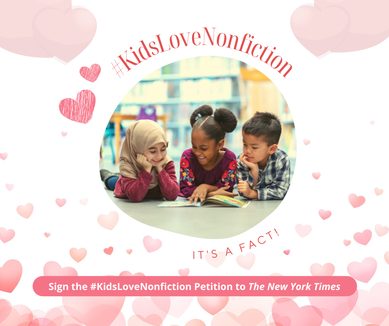
In February, CLA members Mary Ann Cappiello, Professor of Language and Literacy at Lesley University and Xenia Hadjioannou, Associate Professor of Language and Literacy Education at Penn State University, sent a letter signed by more than 500 educators to The New York Times asking the paper to add children's nonfiction bestseller lists to parallel the current fiction-focused lists.
The letter was also published on more than 20 blogs that serve the children's literature community--including this one—and amplified on social media as part of the #KidsLoveNonfiction campaign. (To date, more than 2,100 people have signed it.) A few weeks later, The New York Times responded, saying it had no current plans to add nonfiction lists at this time. Many people were disappointed by this decision, including fourth-grade teacher and CLA member Kate Narita, who has written the following essay, bravely sharing how the petition changed her thinking. -- Melissa Strewart Shattering My Implicit Bias Against Nonfiction by Kate Narita
 Then, in January, my son mentioned a book he had read, Infinite Powers: How Calculus Reveals the Secrets of the Universe by Steven Strogatz. “Oh,” I said. “Sounds interesting. Did you read it for your calculus class?” “Yes,” he said. “And I really enjoyed it.” Did his statement about enjoying a book wake me up to my implicit bias? No. But I did feel a shift inside me. I was pleasantly surprised and excited because I love talking about books. If he had read something and was excited about it, I could read it and discuss it with him, even if he had only read it because it was a class assignment. Here was a way I could deepen my relationship with him as an adult. Even if it was just a one-time occurrence. I asked if I could read the book when he was done, and he brought it home the next time he visited. Fast forward to February break. As my husband and I were packing for a trip to Maui to celebrate our 25th wedding anniversary, he spotted Infinite Powers in the pile of books I was sorting through on our ottoman and picked it up. “What’s this?” he asked. When I explained, he asked if he could take it to Hawaii, and I nodded. I hadn’t read it yet because, to be honest, reading a whole book about calculus felt too daunting. Instead, I packed and read three books from Kate Messner’s History Smashers series and Rukhsanna Guidroz’s Samira Surfs. I also spotted a copy of Kristin Hannah’s Fly Away in our condo. Since I had watched Hannah’s Firefly Lane on Netflix and was listening to The Four Winds on Libby, I couldn’t resist picking up Fly Away, and I devoured it in a day. As my husband and I sat side-by-side reading on the beach, we talked about Infinite Powers. He told me that while he was enjoying the book, the author gave way too much credit to calculus and not nearly enough to physics. He was kind of cranky about it. Actually, he was truly irritated. I was surprised that he was having an emotional response to the book, a nonfiction book. It had stirred up passion inside him, even though it wasn’t a novel. Did his passion wake me up to my implicit bias? Not yet. But I did feel another shift. He was expressing emotion about a book, and I was listening. In the past, it had almost always been me expressing emotion about a novel and him listening. 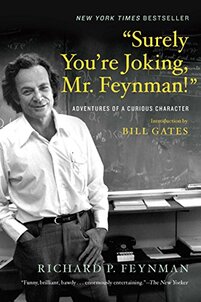 In our almost thirty-year relationship, I could only think of one other time when he had emoted about a book. It was Surely You’re Joking, Mr. Feynman! by Richard Feynman, which I read because he had read it multiple times and was so excited about it. When we got back home, I spotted this petition (which you can still sign) on Twitter. Two professors of literacy, Mary Ann Cappiello and Xenia Hadjioannou, had written a letter asking The New York Times to add three children’s nonfiction bestseller lists—one for picture books, one for middle grade, and one for young adults. I signed it because, of course, I fully supported nonfiction writers and readers! A couple of weeks later, I saw on Facebook that, even though more than 2,000 people had signed the petition, The New York Times had refused to add children’s nonfiction bestseller lists. After a full day of teaching, I was tired, and reading this unfortunate news made me angry. I looked up from my phone. Across the room, my younger son, who was home on spring break, was reading The Elegant Universe: Superstrings, Hidden Dimensions, and the Quest for the Ultimate Theory by Brian Greene for fun because he had liked Infinite Powers so much and wanted to keep reading and learning. Next to him, my husband was reading an article about the Green Bay Packers on the internet.  In that instant, a lightbulb clicked on in my mind, and an awareness of my implicit bias washed over me like a tidal wave. My husband and younger son are readers. They have always been readers. I just didn’t realize it because narratives and fiction aren’t their jam. But give them nonfiction on topics they find fascinating—math, physics, sports—and they’re all in. They’re curious people who read to learn. They want to know about the world, how it works, and their place in it. The decisionmakers at The New York Times seem to have their own implicit bias against children’s nonfiction, and as long as they do not include lists highlighting these books, they’re failing to acknowledge the 42 percent of our youth who crave true texts. They’re also failing to open the eyes of adults who raise those kids, thinking they’re not readers. Maybe we should petition The Wall Street Journal next.
By Jennifer M. Graff, Jenn Sanders, and Courtney Shimek on behalf of The Biography Clearinghouse
A Sampling of Wu Chien Shiung’s Accomplishments and Accolades |
| The first woman to
She also received
The Biography Clearinghouse’s latest entry includes interdisciplinary teaching ideas and resources that
This entry also features interviews with Robeson and Huang about their inspirations for this picturebook biography, connections to Wu Chien Shiung, and details about their research and composing processes, among other interesting topics. Below are three instructional ideas from this entry. |
Mentoring Via Peer Conferencing
Teach the mentor/tutor to pay attention to the writer’s ideas before worrying about spelling conventions.
“Respect the writer and the writer’s paper.”
Make the writer feel comfortable, be an active listener, and don’t write on the person’s paper.
“Involve the writer by asking questions.”
Teach mentors/tutors to ask open ended questions that get the writer talking about their ideas, their writing purpose, or their process.
“Teach the writer.”
Mentors/tutors share writing strategies that can be applied to the current piece but also across other pieces, rather than just trying to fix or revise the one piece they are discussing.
“Encourage the writer.”
Mentors/tutors provide encouragement by noting something specific that the writer did really well and offering one or two suggestions for revision (p.127).
Teachers can also invite students to consider the role of mentorship in their own lives. Students can identify individuals who have served as mentors to them and explore mentorship patterns and practices that are helpful and empowering to them as learners.
Advocacy and Activism
- Yuri Kochiyama was a political activist from California who fought with Malcom X to work for racial justice, civil and human rights, and anti-war movements. She went on to work in the redress and reparations movements for Japanese Americans and continued to fight for political prisoners until she passed away in 2014.
- Pranjal Jain is an Indian-American activist who has been organizing since she was 12 years old. As a current undergraduate at Cornell University, she is the founder of Global Girlhood, a women-led organization that inspires intercultural and intergenerational dialogue in online and offline spaces.
- Stephanie Hu is a Chinese American who founded Dear Asian Youth while she was a high school student as a support website for marginalized young people as a result of the rise in anti-Asian racism and violence during the Covid-19 pandemic.
- Anna May Wong was the first Chinese American movie star to appear in U.S. box offices. Although she was often relegated to smaller roles that perpetuated Asian stereotypes, her career spanned silent films, talkies, theater, and television, and she helped blaze the trail for Asian American performers after her. See Paula Yoo and Lin Yang’s (2009) picturebook biography, Shining Star: The Anna May Wong Story, published by Lee & Low Books.
Printmaking a Character for Fiction Writing
By using basic supplies such as styrofoam plates and markers for printmaking, students can create a character to print and use in their own creative story. Watch this short video of a teacher demonstrating the styrofoam printmaking process.
If you have 1-2 hours…. |
If you have 1-2 days… |
If you have 1-2 weeks… |
Each student can design a main character for a story they write, and then draw and marker-print the character on paper. In this activity, students will experience a process of printmaking that helps them understand the steps and all the work that goes into making printed images. |
After students create their printed character (see the If you have 1 to 2 hours . . . column), students can draft the story in which their character experiences a problem, challenge, or adventure. Based on their story, they can add a background setting in their picture to place their character in the context of their story. Students will simply draw the background setting and objects around their character on their printed picture. |
Students can print their character four to six times, on separate pieces of paper, to create a storyboard with multiple scenes. Save one of these prints to make a title page for the story. For this activity, we recommend students leave the background of the styrofoam plate empty so they can draw in different backgrounds as the story progresses. Then, they can divide their corresponding written story into sections (three, four, or five, depending on the number of prints they made). For each story section, they can draw in a related background setting, additional characters, or objects to help complete the scene. In the end, they will have a multimedia print that has their character marker-printed and the background drawn in with pen, marker, or other tools. |
Reference
Jennifer Sanders is a Professor of Literacy Education at Oklahoma State University, specializing in representations of diversity in children’s and young adult literature and writing pedagogy. She is co-founder and co-chair of The Whippoorwill Book Award for Rural YA Literature and long-time member of CLA.
Courtney Shimek is an Assistant Professor in the department of Curriculum & Instruction/Literacy Studies at West Virginia University. She has been a CLA member since 2015.
BY ERIKA THULIN DAWES & MARY ANN CAPPIELLO on behalf of The Biography Clearinghouse
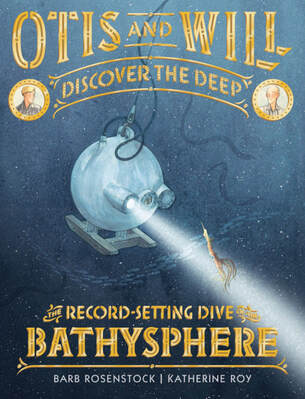
For the first time in history, scientists around the world are working concurrently and urgently on the same challenge: creating viable vaccines and treatments for COVID-19. Early on, scientists did not believe the virus spread from animals to humans. For months, scientists debated whether or not the virus gets transmitted from both droplets and aerosols. Various treatments for the virus have been developed, undergone clinical trials, and been either adopted or rejected. We’ve heard news reports about peer-reviewed publications making announcements about new understandings of the virus. None of the progress that we have made on fighting COVID-19 would be possible without scientists collaborating around the world, sharing information with one another and the public.
The world is doing its best to keep its people safe, through collaboration and the scientific process. You can’t look at a newspaper, glance at your phone, or watch the evening news without hearing the latest information that scientists have hypothesized, tested, or concluded. For young people - indeed, for all of us - this overload of information is overwhelming. It’s also fascinating. The amount of information we are receiving is staggering. We are watching “science” happen in real time - the processes and the methods, the dead ends and the real results.
How do we make these processes and methods visible in elementary and middle school? What are some of the ways children’s literature can provide our young people with a window into the scientific process so they can better understand what thousands of grown-ups around the world are doing to try and beat this virus?
One small way is to explore the scientific process and the collaboration made visible in the picturebook Otis and Will Discover the Deep, written by Barb Rosenstock and illustrated by Katherine Roy. Operating within the Investigate, Explore, and Create Model of the Biography Clearinghouse, we designed teaching ideas geared toward literacy and content area learning as well as opportunities for socio-emotional learning and strengthening community connections.
Investigate
Investigate focuses on authors’ and illustrators’ craft and structure. Suggested mini-lessons, writing opportunities, and talking points invite students to take composition-focused “closer looks” and “tryouts,” accentuating the importance of authors’ and illustrators’ craft from multiple perspectives. For Otis and Will Discover the Deep, we call students attention to the craft of developing narrative tension though words and illustration. We also note the variety of engaging verbs employed by Rosenstock and her precision with language. We suggest an examination of the back matter augmented by listening to Rosenstock’s discussion of the role of back matter in our interview with her. |
Explore
Explore offers resources to connect ideas, historical events, and scientific discoveries and inventions within the featured biographies to our world. These resources are selected to help readers deepen and extend their understandings of and connections between historical events and eras, scientific progress and modern conveniences, and to illustrate the interconnectedness of life across geographical places/spaces and disciplinary perspectives. Otis Barton and Will Beebe were driven by their curiosity about the ocean depths - what kinds of life would they find in the deep regions? We offer a collection of resources to help students research their own questions about deep-sea animal life. We also suggest a broader exploration of contemporary scientific research about animals and their habits. What kinds of organizations are sponsoring research? Who are the people who are carrying out current investigations? What can be learned about the process of science by learning more about their work? This section also includes ideas to explore social and emotional learning. We offer suggestions for using Dramatic Tableaux as a tool to explore the lived experiences of characters. We also invite teachers and students to consider how personal passions and interests in childhood shape who we become as adults. |
Create
Create invites readers to apply what they learn and know from the biographies to their current communities and contexts. Acutely aware of time and resources, our suggestions are typically designed to meet educators where they are and offer additional opportunities. For Otis and Will Discover the Deep we suggest engaging students with the history of ocean exploration, the creation of a timeline of key people and key exploration vehicles along with an opportunity to explore the life stories of contemporary oceanographers. We also suggest a focus on the theme of collaboration, inviting students to consider the effective elements of collaborations and the ways that we can all benefit from collaborations that include multiple perspectives. |
CREATE with Otis and Will Discover the Deep.
Featured here is one of the teaching ideas inspired by Otis and Will Discover the Deep:
Unlikely Collaborators: Researching Collaboration
When we interviewed Barb Rosenstock about researching and writing, Otis and Will Discover the Deep, we were so surprised to discover that Otis and Will didn’t like each other! Given the incredible teamwork displayed in the book, we were a bit dumbfounded. But as Rosenstock points out, getting a job done does not always require that people like each other. It’s about the commitment to the task at hand and the sharing of talents and information to make it happen. How does teamwork and collaboration happen? Why is it so important?
If you have 1-2 hours... |
If you have 1-2 days... |
If you have 1-2 weeks... |
Discuss the ways in which Otis and Will, along with an unnamed team of workers, refined their process of collaboration within the book. Next, listen to our interviews with Rosenstock and Katherine Roy. How did each collaborate with other people in order to research and create the book? What collaborations take place in your classroom on a regular basis? In your school? Have students brainstorm additional ways that they might be able to collaborate across the school day. |
Compare and contrast the collaborations you discussed previously and consider the collaborations within the following picturebooks: Side by Side/Lado a Lado: The Story of Dolores Huerta and Cesar Chavez/La Historia de Dolores Huerta y Cesar Chavez by Monica Brown, illustrated by Joe Cepeda Hiawatha and the Peacemaker by Robbie Robertson, illustrated by David Shannon Sit In: How Four Friends Stood Up by Sitting Down by Andrea Davis Pinkney, illustrated by Brian Pinkney Seeds of Freedom: The Peaceful Integration of Huntsville, Alabama by Hester Bass, illustrated by E.B. Lewis Those Rebels, John and Tom by Barbara Kerley, illustrated by Edwin Fotheringham |
Have students identify people in your community who collaborate with one another. For example, your local grocery store might collaborate with a local food bank. A local church might partner with a homeless organization. A local artists’ collective might collaborate with a restaurant to display work. Have students generate interview questions and then conduct in-person or virtual interviews with them about the importance of collaboration. Students could commemorate these collaborations through art and poetry. Or, students could brainstorm a list of new collaborations that might be beneficial to the community, that they can share with local leaders |
By investigating biographers’ research and writing processes and connecting people and historical events to our modern lives, we hope to motivate change in how readers engage with biographies, each other, and the larger world. To see more classroom possibilities and helpful resources connected to Will and Otis Discover the Deep: The Record Setting Dive of the Bathysphere, visit the Will and Otis entry at the Biography Clearinghouse.
Additionally, we’d love to hear how these interviews and ideas inspired you. Email us at [email protected] with your connections, creations, questions, or comment below if you’re reading this on Twitter or Facebook.
If you are interested in receiving notifications when new content is added to the Biography Clearinghouse, you can sign up for new content notices on our website.
Mary Ann Cappiello teaches courses in children’s literature and literacy methods at Lesley University, blogs about teaching with children’s literature at The Classroom Bookshelf, a School Library Journal blog, and is a former chair of NCTE’s Orbis Pictus Award for Outstanding Nonfiction K-8.
Authors:
CLA Members
Supporting PreK-12 and university teachers as they share children’s literature with their students in all classroom contexts.
The opinions and ideas posted in the individual entries are those of the individual authors and do not necessarily reflect the opinions or views of CLA or the Blog Editors.
Blog Editors
contribute to the blog
If you are a current CLA member and you would like to contribute a post to the CLA Blog, please read the Instructions to Authors and email co-editor Liz Thackeray Nelson with your idea.
Archives
May 2024
April 2024
March 2024
February 2024
January 2024
December 2023
November 2023
October 2023
September 2023
August 2023
May 2023
April 2023
March 2023
December 2022
November 2022
October 2022
September 2022
August 2022
June 2022
May 2022
April 2022
March 2022
February 2022
January 2022
December 2021
November 2021
October 2021
September 2021
August 2021
June 2021
May 2021
April 2021
March 2021
February 2021
January 2021
December 2020
November 2020
October 2020
September 2020
August 2020
June 2020
May 2020
April 2020
March 2020
Categories
All
Activism
Advocacy
African American Literature
Agency
All Grades
American Indian
Antiracism
Art
Asian American
Authors
Award Books
Awards
Back To School
Barbara Kiefer
Biography
Black Culture
Black Freedom Movement
Bonnie Campbell Hill Award
Book Bans
Book Challenges
Book Discussion Guides
Censorship
Chapter Books
Children's Literature
Civil Rights Movement
CLA Auction
CLA Breakfast
CLA Expert Class
Classroom Ideas
Collaboration
Comprehension Strategies
Contemporary Realistic Fiction
COVID
Creativity
Creativity Sponsors
Critical Literacy
Crossover Literature
Cultural Relevance
Culture
Current Events
Digital Literacy
Disciplinary Literacy
Distance Learning
Diverse Books
Diversity
Early Chapter Books
Emergent Bilinguals
Endowment
Family Literacy
First Week Books
First Week Of School
Garden
Global Children’s And Adolescent Literature
Global Children’s And Adolescent Literature
Global Literature
Graduate
Graduate School
Graphic Novel
High School
Historical Fiction
Holocaust
Identity
Illustrators
Indigenous
Indigenous Stories
Innovators
Intercultural Understanding
Intermediate Grades
International Children's Literature
Journal Of Children's Literature
Language Arts
Language Learners
LCBTQ+ Books
Librarians
Literacy Leadership
#MeToo Movement
Middle Grade Literature
Middle Grades
Middle School
Mindfulness
Multiliteracies
Museum
Native Americans
Nature
NCBLA List
NCTE
NCTE 2023
Neurodiversity
Nonfiction Books
Notables
Nurturing Lifelong Readers
Outside
#OwnVoices
Picturebooks
Picture Books
Poetic Picturebooks
Poetry
Preschool
Primary Grades
Primary Sources
Professional Resources
Reading Engagement
Research
Science
Science Fiction
Self-selected Texts
Small Publishers And Imprints
Social Justice
Social Media
Social Studies
Sports Books
STEAM
STEM
Storytelling
Summer Camps
Summer Programs
Teacher
Teaching Reading
Teaching Resources
Teaching Writing
Text Sets
The Arts
Tradition
Translanguaging
Trauma
Tribute
Ukraine
Undergraduate
Using Technology
Verse Novels
Virtual Library
Vivian Yenika-Agbaw Student Conference Grant
Vocabulary
War
#WeNeedDiverseBooks
YA Lit
Young Adult Literature


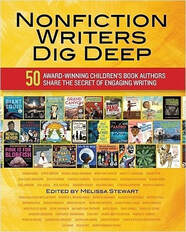

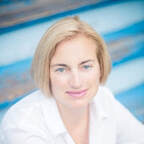





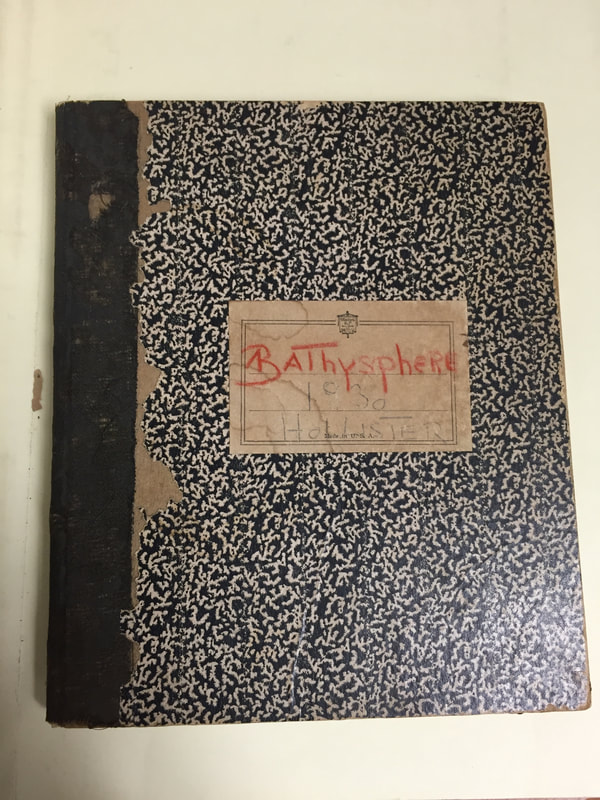



 RSS Feed
RSS Feed